CQ6: Creativity: 3 reasons to love it & 3 reasons to hate it
 Last year’s Summer I was at the Creativity Conference in Oregon. I was triggered by the word Cranxiety* introduced by Adam Green who does research on the neuroscience of creativity. It means Creativity Anxiety. They found that people feel significantly more anxiety when they have to do a job that requires creativity than a job that doesn’t require creativity. And that this anxiety predicts creative achievement in real life. The worse part, women showed the most Cranxiety (Daker et al., 2020).
Last year’s Summer I was at the Creativity Conference in Oregon. I was triggered by the word Cranxiety* introduced by Adam Green who does research on the neuroscience of creativity. It means Creativity Anxiety. They found that people feel significantly more anxiety when they have to do a job that requires creativity than a job that doesn’t require creativity. And that this anxiety predicts creative achievement in real life. The worse part, women showed the most Cranxiety (Daker et al., 2020).
 *It wasn’t actually the word that triggered me, it was the picture that went with the word. It showed a picture of Krang. Who? Krang, the alien evil brain, the bad guy from the Teenage Mutant Ninja Turtles. He used Krang as a metaphor for creativity anxiety, CRANxiety. The evil brain that makes you fear creativity. I think it is hilarious, also because I remember the TV-show. Forgive me this anecdote if it doesn’t push your buttons.
*It wasn’t actually the word that triggered me, it was the picture that went with the word. It showed a picture of Krang. Who? Krang, the alien evil brain, the bad guy from the Teenage Mutant Ninja Turtles. He used Krang as a metaphor for creativity anxiety, CRANxiety. The evil brain that makes you fear creativity. I think it is hilarious, also because I remember the TV-show. Forgive me this anecdote if it doesn’t push your buttons.
The anxiety that people may feel for creativity or any other negative attitude towards creativity, made us think twice about the name for our Minor on Creativity. (At Delft University of Technology completely dedicated to Creativity.) We decided to keep the word and we chose the title: Connected Creativity.
The pressure on ‘being creative’ can be quite high. I also remember it from my time as an industrial design student. Everyone around you is ‘so creative’, coming up with amazing ideas, creating the most beautiful drawings, it makes you feel quite uncreative. And I can imagine that this type of pressure has a negative influence on your attitude towards creativity. Fortunately, the pressure never got to me, I’m still a creativity lover :). But what is it that some people love creativity and some people hate creativity?
I will close chapter one about Creativity in the West anno 2020 with an article that tries to answer that question. I hope that this article will give insight on why this one colleague jumps into action full of energy when he needs to be creative and why the other colleague is trying to get out as soon as possible.
3 reason why people love creativity
This is the easy part, there is a lot of information available on why we love creativity.
Firstly, generally, people love creativity because our society values creativity. We are extremely positive towards creativity (Weiner, 2000). That’s it. I refer to article CQ2 and CQ3 if you want to know why.
Secondly, people love creativity because they see creativity as a way to express their feelings. This idea about creativity was born in the Romantic Period (Weiner, 2000) and will return in the next chapter).
Thirdly, if we take the Humanistic approach: ‘creativity arises from a natural human tendency towards growth and self-actualization’ (Conti and Amabile, 2011: p. 148). Where Humanism is ‘the belief that humans have the ability to solve problems through their own mental efforts, without having to rely on inspiration for the gods of from God’ (Dacey, 2011: p. 608). We could say that creativity is in the nature of human beings. Creativity is the source of survival of our species. Think about it.
Now we go to the more difficult part, why do people say: ‘Creativity is not my cup of tea.’?
3 reasons why people hate creativity
Bad experiences in workshops
Attitudes are constructs of affective, cognitive and behavioural characteristic. Attitudes can change quite quickly due to experience (Runco, 2014: p.185; Basadur & Basadur, 2011). Thus, bad experiences with creativity will negatively influence our attitude towards creativity. And how many of us haven’t sat through brainstorm sessions in which we had to be ‘creative’, and nothing came from it? Too many of these types of experiences, and you become at least sceptical about creativity.
Unfortunately, these negative experience are due to wrong assumptions on creativity.
Firstly, some see creativity as outside the box thinking in terms of: let’s remove all constraints! And nothing comes from it. In this case, when we are asked to be creative the facilitator means just this: forget the criteria and think up anything you can. It might be OK to postpone judgement when you are trying to generate ideas, but we mustn’t forget that we also need to choose something and preferably something we can work with.
If we do not execute the second part, nothing useful will come from the meeting and this will leave us unsatisfied and with a negative feeling towards creativity. While we actually have not experienced creativity, only random idea generation. I refer to article CQ5 if you want to understand outside the box thinking and learn that creativity is not about removing constraints. And to article CQ4 if you want to understand that creativity is not the same as idea generation.
Experiences with these types of meetings or workshops make us reluctant towards creativity. While we have not experienced creativity in the workshop, only random idea generation. We shouldn’t be negative about creativity by these experiences, we should question the quality of the workshops. And of course, there are those people who get really pumped of being imaginative and take ideas to the moon. So, at least in the short term, they will be happy with only doing the idea generation.
Too much focus on novelty instead of value
Let’s assume that we do judge the ideas, that we remember also the second part of the ‘creative diamond’ (diverging-converging, article CQ4). Great. The next question is: ‘how do we choose for creativity’?
For this argument, let’s look at Amabile’s definition of creativity (1996, p35):
‘A product or response will be judges as creative to the extent that (a) it is bot a novel and appropriate, useful, correct or valuable response to the task at hand, and (b) the task is heuristic rather than algorithmic’.
Both novelty and value are part of this definition of creativity. To choose for creativity we need to choose ideas that fit both criteria. And this is where it goes wrong. According to Bilton (2014) organizations choose novel ideas over valuable ideas. They see creativity is a way of describing the novelty of the innovation, so the more creative the innovation, the newer it is. However, the value of an innovation is also part of creativity. And ‘new’ for the sake of novelty is not always valuable. As Bilton (2014) stated:
‘the restless pursuit of novelty in organisations can produce a scattergun proliferation of initiatives, projects and plans which bear little relation to the real needs, capabilities and purposes of the organisation.’
If we assume creativity only represents the novelty of an idea or innovation, we firstly don’t to justice to creativity. Secondly, we put a lot of pressure on the ‘creative individuals’, they have to come up with the most novel (in their eyes creative) ideas to beat the competition with the awesome innovation. This is the pressure I recognize as a student. And thirdly, we make people who are more into critical thinking than into random idea generation, seem like the ‘bad guys’, always putting a new idea down. And make them seem the uncreative ones (Bilton, 2014). While actually their criticism is part of creativity and can even make ideas better. These people are the ones that might say: ‘Creativity is not for me’. They don’t see the value in all this novelty and so they are no fans of creativity.
Internal constraints
Kaufman and Sternberg (2010) give in their conclusion for The Cambridge Handbook of Creativity on constraints on creativity. Here I focus on internal constraints and the ones that have to do with a negative attitude towards creativity. And keep in mind that the negative attitude can also be unconscious.
The biggest constraint is about risk: ‘I don’t want to be creative because the risk is too high.’ What if you have created something and everyone hated it, it makes you think twice trying to be creative again. Some may decide against creativity because the risk seems to high. (Kaufman & Sternberg, 2010). Especially people that are not a fan of risk might dislike creativity, too much risk for them.
Other constraints that the authors mention are:
- ‘the willingness and ability to redefine existing problems in new terms’;
- ‘the willingness to be critical of one’s own work’;
- ‘the willingness to overcome the obstacles that typically block creative work’.
For this article it would be interesting to know why people would not be willing to redefine problems, to be critical at one’s own work, and to overcome obstacles. Kaufman & Sternberg (2010) don’t answer this question. As I write this down it seems like this has to do with motivation and not with an aversion towards creativity.
Final point Sternberg and Kaufman (2010) make is about people that become a prisoner of their own expertise. Expertise is necessary for creativity (this point will return in chapter three and four). But it doesn’t help if your expertise blocks you from doing the things mentioned above. We can all imagine that it would be hard to admit that something you have been working on for twenty years is wrong.
Bilton (2014) uses the same sort of argumentation for innovation in companies. When a new tech-company introduces some new technology, another company, with older technology, dies. This new tech-company becomes the new standard. And then, when they have become the standard they turn into an old tech-company themselves and a new start-up will sweep them away. The circle of business-life. The only way to prevent this is not to let your expertise block your development. Nor as a person, nor as a company.
Conclusions
People like creativity because:
- Our society has warm feelings towards creativity
- We use creativity to express our emotions
- We as human beings are intrinsically motivated to create because it has made us survive.
People dislike creativity because:
- The negative experiences they had with creativity, that was not creativity
- The pressure that comes with the word
- The risk of creating something new is too high
Figuring out in a week why people have a negative attitude towards creativity turned out difficult. We have research on positive attitudes that stimulate creativity. We have research on negative attitudes that block creativity. We have research on why we have a positive attitude towards creativity. But research on why some have a negative attitude towards creativity is more difficult to find. Although, I have the gut feeling that there are places I didn’t look for information on this topic. Let me know if you know where!
That concludes the first chapter of the CreativityQuartet2020. I hope you enjoyed it so far. In this chapter, I wanted to set the stage and give you a general overview of our view on creativity. Next chapter we go a further back into history. We will find answers on a question like: Why do people say: ‘I’m not creative?’ Don’t let the word ‘history’ scare you off. You will be surprised how old some of our beliefs on creativity are. There are some cool historic stories to be told!
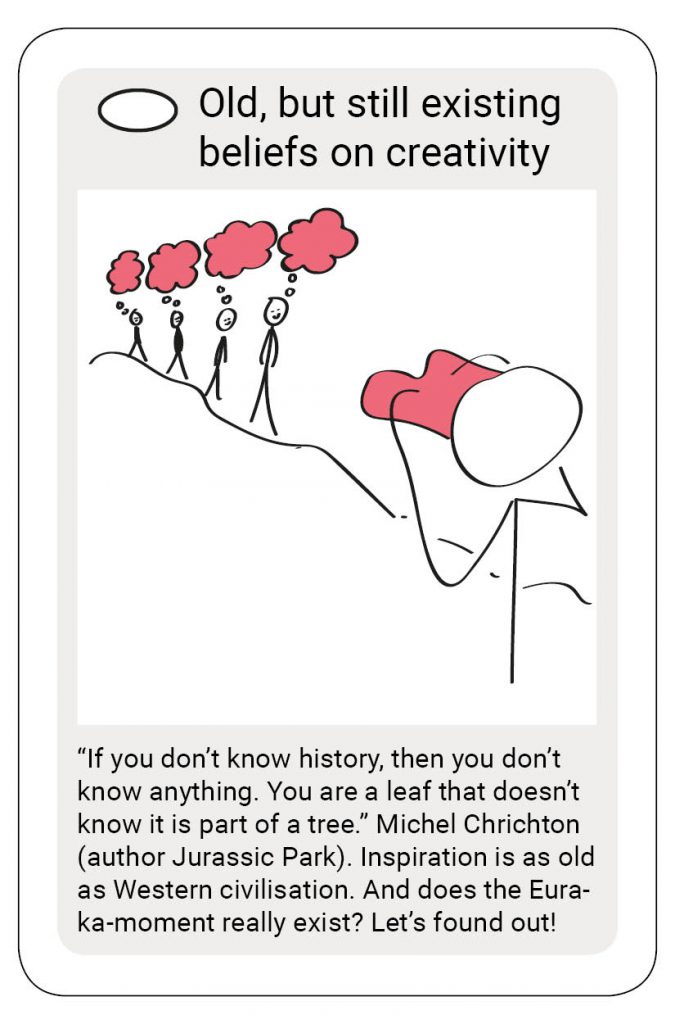
Below a summary of chapter one in quartet cards. Thanks for reading and I wish you a pleasant continuation of your day.
Willemijn
The creativity quartet combines my knowledge of and experience with creativity. Just like any other person I have experience with creativity as long as I live, but more deliberate when I started studying Industrial Design Engineering in 2001. I have over fifteen experience in facilitating and training creativity. My interest in creativity theory started in 2015. And I’m currently looking into doing promotional research on creating an overview of creativity theories. What you read in the articles are my interpretations of the truth. If you have something to add to that, please do so. Ending with my favourite quote on creativity by Maya Angelou:
“You can never use up creativity. The more you use, the more you have.”
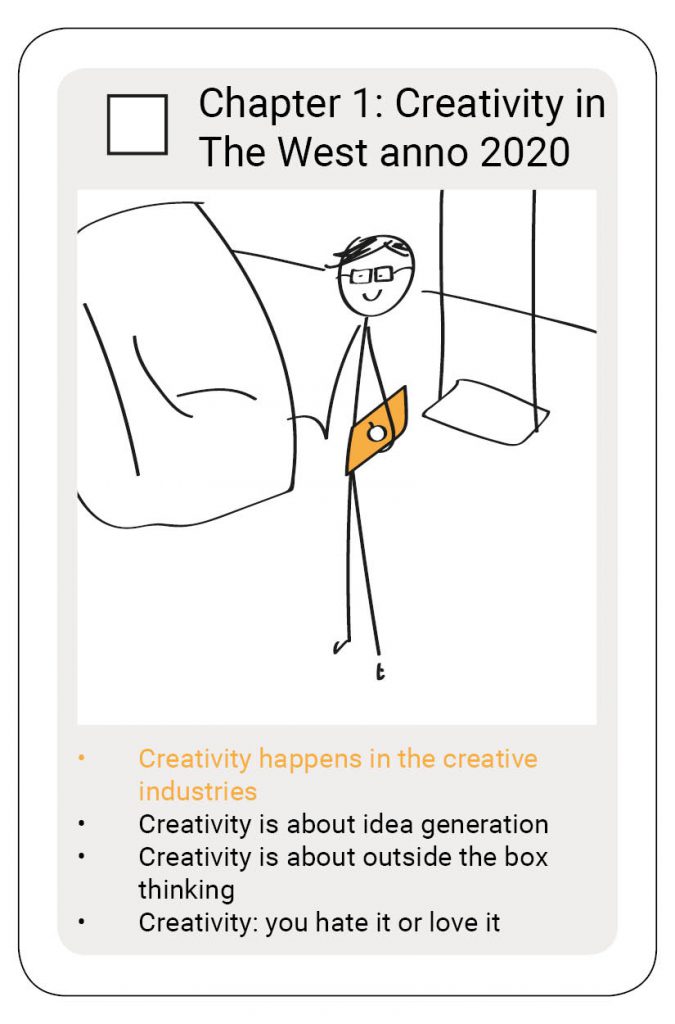
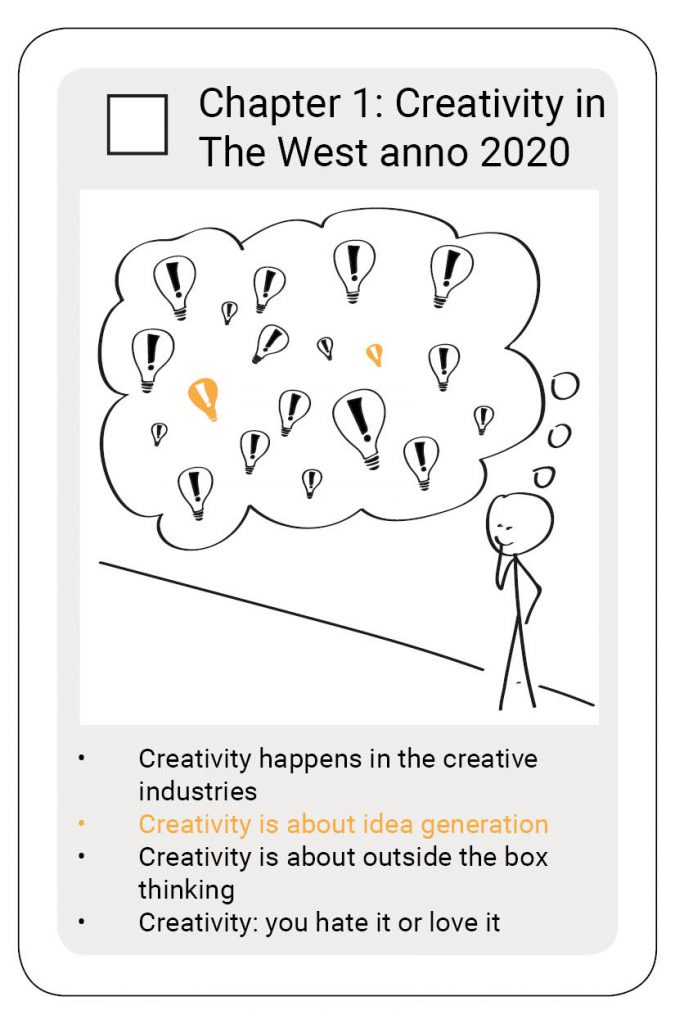

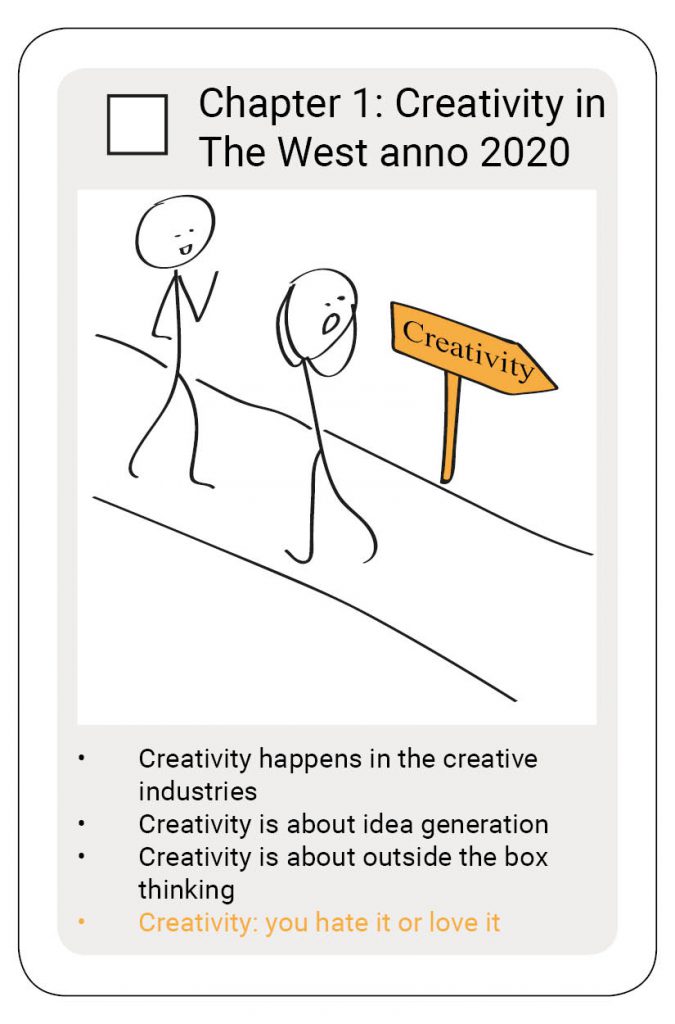
References
- Amabile, T. M. (1996). Creativity in Context. New York: Avalon publishing.
- Basadur, M. and Basadur, T. Attitudes and Creativity. In Runco, M. A. and Pritzker S.R. (Eds.). Encyclopedia of Creativity.
Second Edition, Vol 2. pp. 147-152. London, UK: Academic Press. - Bilton, Chris. (2014) Uncreativity: the shadow side of creativity. International Journal of Cultural Policy. ISSN 1028-6632 (In Press)
- Conti, R. and Amabile, T. M. (2011). Motivation. In Runco, M. A. and Pritzker S.R. (Eds.). Encyclopedia of Creativity.
Second Edition, Vol 2. pp. 147-152. London, UK: Academic Press. - Daker, R. J., Cortes, R. A., Lyons, I. M., & Green, A. E. (2020). Creativity anxiety: Evidence for anxiety that is specific to creative thinking, from STEM to the arts. Journal of Experimental Psychology: General, 149(1), 42–57.
- Dacey, J. (2011). Historical Conceptions of Creativity. In Runco, M. A. and Pritzker S.R. (Eds.). Encyclopedia of Creativity.
Second Edition, Vol 1. pp. 608-616. London, UK: Academic Press. - Kaufman, J.C. and Sternberg R. J. (2010). Constraints on Creativity. In Kaufman J. C., and Sternberg, R. J. (Eds.). The Cambridge Handbook of Creativity, pp.467-481. New York: Cambridge University Press.
- Runco, M. A. (2014). Creativity: Theories and themes: Research, development, and practice. Second edition. Oxford, UK: Academic Press.
- Weiner, R. P. (2000). Creativity & beyond: Cultures, values and change. Albany, NY: State University of New York
Press.
Tags:
SUGGESTIONS FOR FURTHER READING
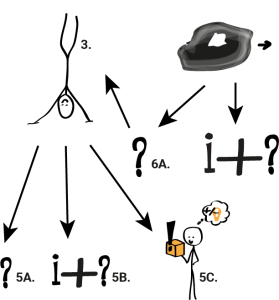
CQ21: How do people solve problems?
The Cognitive Analytical Model (CAM) is described by Robert W. Weisberg in his 2006 book: Creativity: Understanding Innovation in Problem Solving, Sci

CQ1: ‘Creativity is a lazy word’
Firstly, I wish you a happy, healthy and a h…[fill out your own h-word] 2020! Secondly, starting today I will post an article on creativity on my we
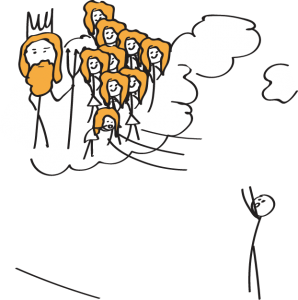
CQ8: Divine inspiration
Inspiration is a Gift from the Gods. Right. Let’s start our historical review with the Big 3: Socrates, Plato, and Aristotle. I will shortly mention t
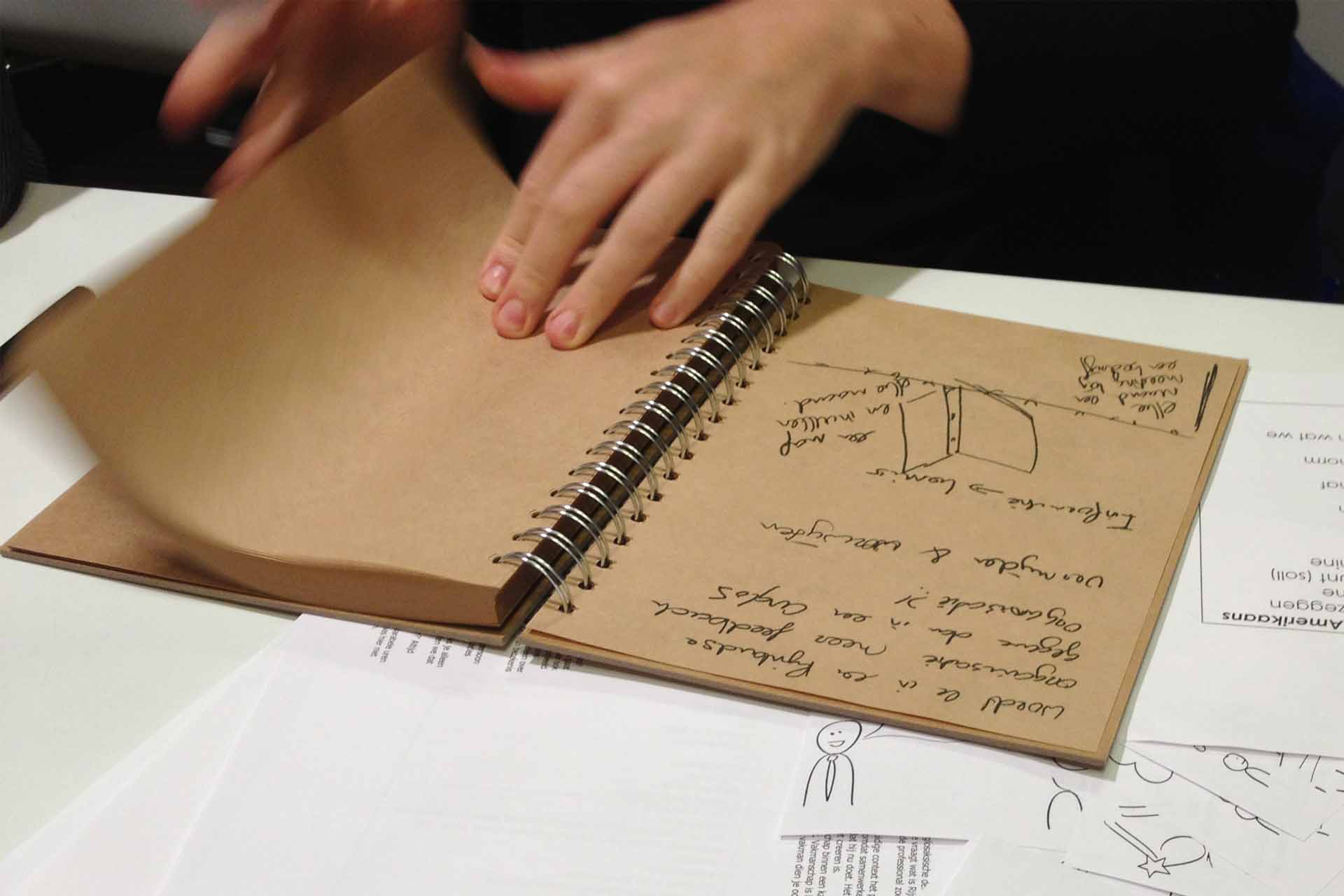
Title photo
Inspiration for inspiration
Would you like to receive the Creativity Quartet 2020 as inspiration? Think about how you can inspire us. For example, we have a coffee, you send us a book or article, link us to a person, point us to a website, etc. Leave your name and e-mail address and we’ll contact you for further information. We will not use your e-mail address to send you offers and won’t give away your information to other parties.



